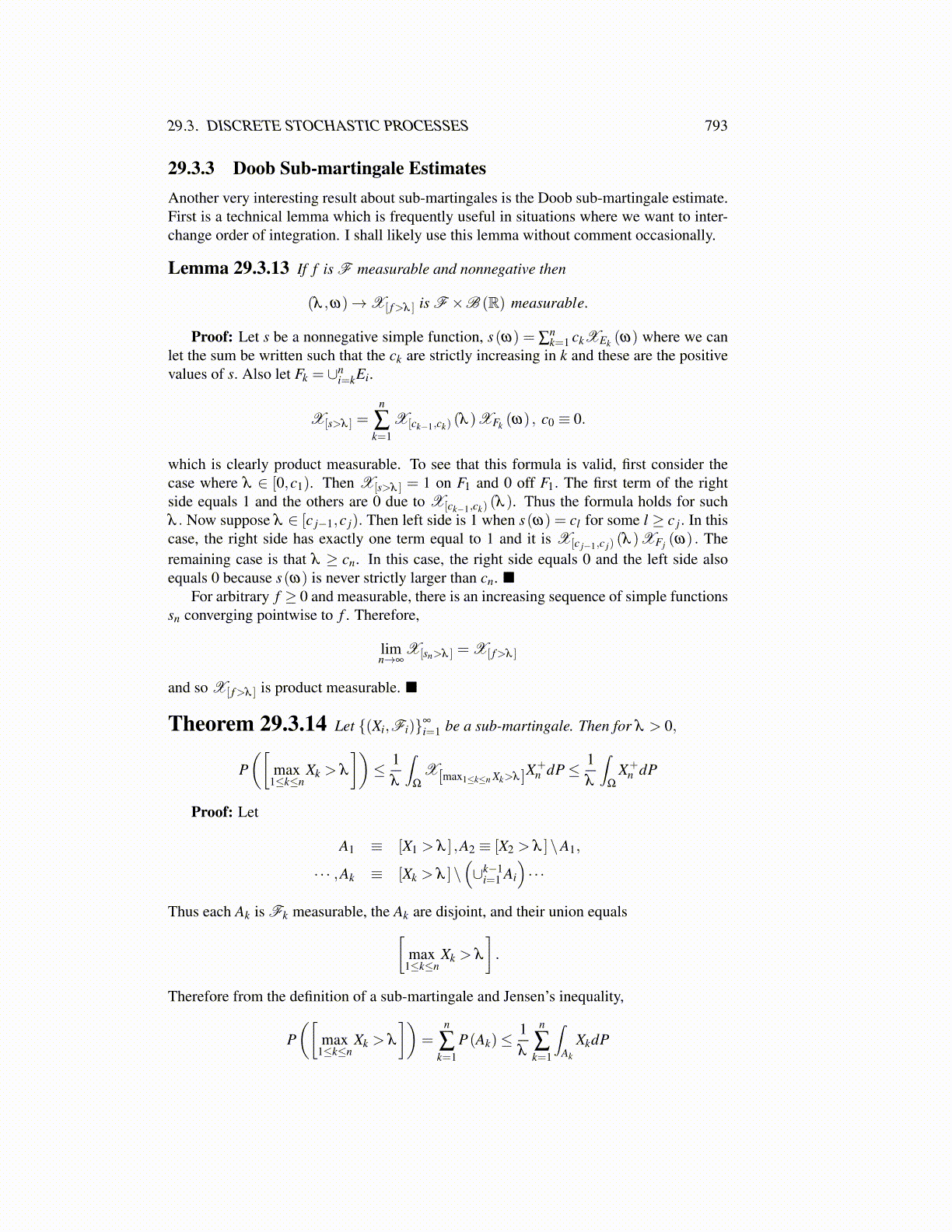
29.3. DISCRETE STOCHASTIC PROCESSES 793
29.3.3 Doob Sub-martingale EstimatesAnother very interesting result about sub-martingales is the Doob sub-martingale estimate.First is a technical lemma which is frequently useful in situations where we want to inter-change order of integration. I shall likely use this lemma without comment occasionally.
Lemma 29.3.13 If f is F measurable and nonnegative then
(λ ,ω)→X[ f>λ ] is F ×B (R) measurable.
Proof: Let s be a nonnegative simple function, s(ω) = ∑nk=1 ckXEk (ω) where we can
let the sum be written such that the ck are strictly increasing in k and these are the positivevalues of s. Also let Fk = ∪n
i=kEi.
X[s>λ ] =n
∑k=1
X[ck−1,ck) (λ )XFk (ω) , c0 ≡ 0.
which is clearly product measurable. To see that this formula is valid, first consider thecase where λ ∈ [0,c1). Then X[s>λ ] = 1 on F1 and 0 off F1. The first term of the rightside equals 1 and the others are 0 due to X[ck−1,ck) (λ ). Thus the formula holds for suchλ . Now suppose λ ∈ [c j−1,c j). Then left side is 1 when s(ω) = cl for some l ≥ c j. In thiscase, the right side has exactly one term equal to 1 and it is X[c j−1,c j) (λ )XFj (ω) . Theremaining case is that λ ≥ cn. In this case, the right side equals 0 and the left side alsoequals 0 because s(ω) is never strictly larger than cn. ■
For arbitrary f ≥ 0 and measurable, there is an increasing sequence of simple functionssn converging pointwise to f . Therefore,
limn→∞
X[sn>λ ] = X[ f>λ ]
and so X[ f>λ ] is product measurable. ■
Theorem 29.3.14 Let {(Xi,Fi)}∞
i=1 be a sub-martingale. Then for λ > 0,
P([
max1≤k≤n
Xk > λ
])≤ 1
λ
∫Ω
X[max1≤k≤n Xk>λ ]X+n dP≤ 1
λ
∫Ω
X+n dP
Proof: Let
A1 ≡ [X1 > λ ] ,A2 ≡ [X2 > λ ]\A1,
· · · ,Ak ≡ [Xk > λ ]\(∪k−1
i=1 Ai
)· · ·
Thus each Ak is Fk measurable, the Ak are disjoint, and their union equals[max
1≤k≤nXk > λ
].
Therefore from the definition of a sub-martingale and Jensen’s inequality,
P([
max1≤k≤n
Xk > λ
])=
n
∑k=1
P(Ak)≤1λ
n
∑k=1
∫Ak
XkdP